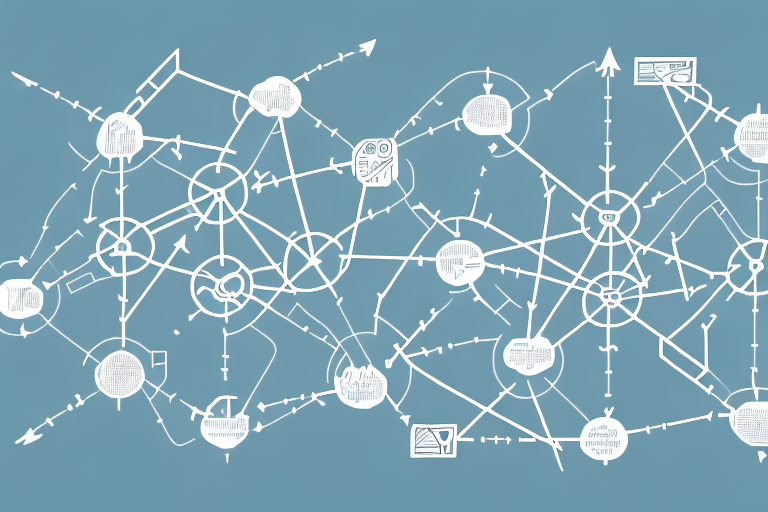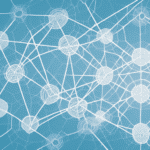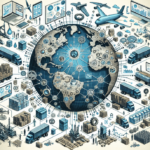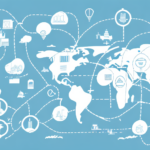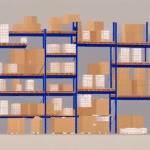Understanding the Supply Chain and TTW: Toestemming Tot Wegvoering
If you're involved in the transport of goods, you're likely familiar with the term Supply Chain Management (SCM). SCM encompasses the end-to-end process of moving a product from its place of origin to the end consumer, including sourcing raw materials, manufacturing, shipping, and inventory tracking. According to Statista, the global SCM market is projected to reach significant growth by 2025, underscoring its critical role in modern business operations. To ensure efficiency and compliance in this complex process, many businesses utilize specialized systems and tools such as TTW (Toestemming Tot Wegvoering)—a Dutch term meaning "permission for removal."
What is the Supply Chain?
Before delving into the specifics of TTW, it's essential to understand what the supply chain entails. A supply chain is composed of various actors, including manufacturers, suppliers, transportation companies, brokers, distributors, and retailers. Each of these entities plays a unique role in the process of moving goods from one location to another. Effective supply chain management ensures that each step in this process is efficient and optimized, minimizing disruptions and reducing waste.
One of the key challenges in supply chain management is coordinating activities among diverse actors, especially in global supply chains that span multiple countries and cultures. According to the APICS, effective communication and collaboration are vital for aligning goals and ensuring seamless operations across the entire supply chain.
In recent years, there has been an increasing emphasis on sustainability within supply chain management. This includes not only reducing waste and emissions but also ensuring fair labor practices and minimizing environmental and social impacts. Many companies are integrating sustainability initiatives into their supply chains, from responsible sourcing of materials to eco-friendly transportation and distribution methods.
A Brief Introduction to TTW: Toestemming Tot Wegvoering
TTW (Toestemming Tot Wegvoering) is a crucial document used in the Netherlands to authorize the transport of certain goods. Essentially, TTW serves as a permission slip required to move specific types of goods, particularly those subject to excise duties such as alcohol and tobacco products. Issued by the Dutch Tax Authorities, a TTW includes detailed information about the goods being transported and the planned route.
It's important to note that not all goods require a TTW. The necessity of this document depends on the category of goods and applicable regulations. Moreover, a TTW is time-bound, typically valid for up to one year, and must be presented to customs officials upon request. Failure to obtain or present a valid TTW can result in significant fines and other penalties, making compliance essential for businesses operating in the Netherlands.
The Importance of Supply Chain Management
Supply chain management is a critical aspect of any business that deals with physical products. By ensuring the efficient and effective movement of goods, businesses can reduce operational costs, minimize waste, and enhance customer satisfaction. According to a report by McKinsey & Company, optimized supply chains can lead to a 10-20% reduction in costs, highlighting the financial benefits of proper SCM.
Furthermore, effective supply chain management enables businesses to stay competitive by allowing them to quickly adapt to changes in demand or market conditions. This adaptability is crucial in today's fast-paced global market, where consumer preferences and market dynamics can shift rapidly.
Additionally, strong supply chain management fosters better relationships with suppliers and partners. By establishing clear communication channels and collaborative practices, businesses can build trust and develop long-term partnerships. This can lead to advantages such as better pricing, higher quality supplies, and increased reliability, ultimately benefiting both the business and its customers.
The Role of TTW in the Supply Chain
TTW plays a vital role in supply chain management within the Netherlands by ensuring that the transport of goods complies with legal and safety standards. By requiring TTW, the Dutch government can monitor the movement of regulated goods and maintain oversight, thereby preventing illegal activities such as smuggling and fraud.
Moreover, TTW serves as a tool for promoting environmental sustainability. The document necessitates businesses to provide information regarding the type and quantity of goods being transported, which allows the government to assess and regulate the environmental impacts of transportation. This information can be leveraged to encourage more sustainable transportation methods, such as adopting electric vehicles or optimizing delivery routes to reduce carbon emissions.
How TTW Affects the Transport of Goods
The implementation of TTW has significant implications for the transport of goods within the Netherlands. For businesses involved in shipping products, TTW introduces an additional layer of bureaucracy and administrative tasks. However, this requirement also ensures that goods are transported legally and safely, thereby safeguarding both businesses and consumers.
Additionally, TTW has led to the enforcement of stricter regulations regarding the weight and dimensions of transport vehicles. This regulatory push has encouraged a shift towards more efficient and environmentally friendly modes of transportation, such as rail and maritime transport. While this transition may initially incur higher costs for businesses due to the need for specialized equipment or services, it ultimately contributes to sustainability goals and reduces overall environmental impact.
Understanding the Legal Aspects of TTW
To utilize TTW effectively, businesses must adhere to various legal requirements. This includes providing comprehensive information about the goods being transported and ensuring compliance with relevant regulations. Non-compliance can result in substantial fines and penalties, making it imperative for businesses to understand and follow the legal guidelines associated with TTW.
Insurance is another critical legal aspect linked to TTW. Businesses must secure appropriate insurance coverage, including liability insurance to cover potential damages or injuries during transportation and cargo insurance to protect the goods themselves. Adequate insurance safeguards businesses against financial losses arising from accidents, theft, or other unforeseen events during transit.
For businesses engaged in cross-border transportation, understanding international laws and regulations is essential. This involves adhering to customs regulations, import/export laws, and other country-specific requirements that may impact the transport of goods. Navigating these international legal frameworks requires thorough knowledge and often collaboration with legal experts to ensure full compliance.
The Benefits and Drawbacks of Using TTW in the Supply Chain
Like any regulatory system, TTW presents both benefits and drawbacks within the supply chain. On the positive side, TTW ensures that goods are transported legally and safely, reducing the risks of fraud and illegal activities. It also provides greater transparency and traceability in the movement of goods, which is essential for businesses seeking to maintain high standards of accountability.
Implementing TTW can enhance inventory tracking and management, allowing businesses to monitor the movement of goods accurately. This increased visibility can lead to improved operational efficiency and help prevent losses due to theft or mismanagement.
However, TTW also introduces challenges, such as increased administrative burden and potential delays in the transportation process. The requirement for detailed documentation and compliance checks can slow down operations, posing a hurdle for businesses striving for rapid and flexible supply chains.
Furthermore, the cost of implementing and maintaining TTW processes can be significant. Businesses may need to invest in specialized software, training, and additional personnel to manage TTW compliance effectively. These costs can be a barrier, especially for smaller enterprises with limited resources.
Benefits of Using TTW
- Legal Compliance: Ensures the lawful transport of regulated goods.
- Transparency: Provides clear records of goods movement, aiding in inventory management.
- Fraud Prevention: Helps deter and detect illegal activities such as smuggling.
- Environmental Monitoring: Facilitates tracking of transportation impacts, promoting sustainability.
Drawbacks of Using TTW
- Increased Bureaucracy: Adds administrative steps to the transportation process.
- Potential Delays: Can cause delays due to compliance checks and documentation requirements.
- Higher Costs: Requires investment in systems, training, and potentially additional staff.
- Complexity: Navigating legal requirements can be challenging, especially for smaller businesses.
How to Apply for TTW: A Step-by-Step Guide
Applying for TTW involves several key steps to ensure compliance with Dutch regulations. Below is a step-by-step guide to help businesses navigate the TTW application process:
- Gather Required Information: Collect detailed information about the goods to be transported, including their value, weight, and origin. Ensure that the goods fall under the categories requiring TTW.
- Determine the Route: Plan the transportation route, noting all stops and transit points. Accurate route information is essential for the TTW application.
- Complete the Application Form: Fill out the TTW application with all necessary details. This form is typically available through the Dutch Tax Authorities.
- Submit the Application: Submit the completed application form along with any required supporting documents to the appropriate authorities.
- Await Approval: The Dutch Tax Authorities will review the application. If approved, a TTW document will be issued, specifying the validity period and conditions.
- Maintain Documentation: Keep a copy of the TTW with you at all times during transport, as it may be requested by customs officials or other authorities.
It's important to note that the TTW is typically valid for up to one year. If you need to transport goods beyond this period, you must apply for a new TTW. Additionally, any changes to the initial application details—such as alterations in the transport route or an increase in the value of the goods—necessitate an updated TTW application.
Maintaining proper documentation and adhering to TTW requirements helps prevent fines and ensures smooth transportation operations. Businesses should also consider implementing internal checks and training programs to stay compliant with TTW regulations.
Best Practices for Managing the Supply Chain with TTW
Effectively managing the supply chain with TTW involves adopting best practices that streamline processes and ensure compliance. Here are some recommended practices:
- Comprehensive Documentation: Ensure all required information is accurately documented and readily accessible. This includes details about the goods, transport routes, and any relevant legal requirements.
- Leverage Technology: Utilize supply chain management software that integrates TTW compliance features. Automated systems can reduce errors, save time, and enhance visibility.
- Regular Training: Provide ongoing training for employees and partners involved in transportation to ensure they understand TTW requirements and compliance procedures.
- Collaborate with Partners: Maintain clear communication and collaboration with transportation providers, suppliers, and other stakeholders to ensure everyone adheres to TTW regulations.
- Monitor and Audit: Implement monitoring and auditing processes to regularly assess compliance with TTW and identify areas for improvement.
By following these best practices, businesses can effectively integrate TTW into their supply chain operations, enhancing compliance, efficiency, and sustainability.
The Future of Supply Chain Management and TTW
As supply chain management continues to evolve, the integration of advanced technologies is poised to transform how TTW is utilized in the Netherlands. Innovations such as blockchain and the Internet of Things (IoT) offer opportunities to enhance transparency, security, and efficiency in the transportation of goods.
Blockchain technology can provide immutable records of goods movement, ensuring that TTW documentation is tamper-proof and easily verifiable. This enhances trust and reduces the risk of fraud within the supply chain.
The Internet of Things (IoT) enables real-time tracking of goods through connected devices, offering greater visibility into the transportation process. IoT sensors can monitor conditions such as temperature and humidity, ensuring that goods are transported under optimal conditions and facilitating proactive management of any issues that arise.
Furthermore, automation and artificial intelligence (AI) are expected to play significant roles in optimizing supply chain operations. AI-powered analytics can predict demand fluctuations, optimize routing, and manage inventory levels more effectively, contributing to more responsive and resilient supply chains.
These technological advancements not only streamline TTW compliance but also foster more sustainable and efficient transportation practices. As these technologies become more widespread, businesses will need to adapt their supply chain strategies to leverage these tools effectively.
Case Studies: Real-World Examples of Successful Implementation of TTW
Numerous businesses have successfully integrated TTW into their supply chain management processes, reaping the benefits of enhanced compliance and efficiency. Here are a couple of real-world examples:
Dutch Electronics Company
A prominent Dutch electronics manufacturer implemented TTW to track the movement of high-value products across multiple distribution centers. By integrating TTW into their supply chain software, the company achieved real-time visibility into their inventory, reduced instances of lost or stolen goods, and ensured compliance with all regulatory requirements. This led to a 15% increase in operational efficiency and strengthened their reputation for reliability.
Food and Beverage Distributor
A food and beverage distributor in the Netherlands utilized TTW to manage the transport of perishable goods. By leveraging IoT sensors and TTW integration, the company monitored the temperature and condition of their products throughout the supply chain. This proactive approach not only ensured the quality and safety of their goods but also minimized waste due to spoilage. As a result, the company reduced waste by 20% and enhanced customer satisfaction through consistent product quality.
Common Challenges and Solutions in Implementing TTW in the Supply Chain
Implementing TTW within the supply chain can present several challenges. Below are common obstacles businesses may face and potential solutions to address them:
Compliance Complexity
Challenge: Navigating the intricate legal requirements associated with TTW can be daunting, particularly for businesses operating across multiple regions.
Solution: Engage legal experts or consultants specializing in Dutch transportation regulations to ensure accurate compliance. Additionally, investing in compliance management software can help streamline the process and reduce the risk of errors.
Administrative Burden
Challenge: The documentation and administrative tasks required for TTW can be time-consuming, detracting from core business activities.
Solution: Automate documentation processes using supply chain management systems that include TTW integration. Automation reduces manual effort, minimizes errors, and speeds up the application and approval process.
Technology Integration
Challenge: Integrating TTW compliance into existing supply chain systems can be technically challenging, especially for businesses with legacy systems.
Solution: Adopt modular and scalable supply chain software solutions that allow for seamless integration with TTW requirements. Partnering with technology providers who offer customization can also facilitate smoother implementation.
Data Management
Challenge: Managing the vast amount of data associated with TTW applications, including detailed information about goods and transport routes, can be overwhelming.
Solution: Implement robust data management practices and use databases or cloud-based solutions to store and organize TTW-related information efficiently. Data analytics tools can further help in managing and interpreting this data for better decision-making.
Risks Associated with Using TTW in the Supply Chain
While TTW offers numerous benefits, it also comes with certain risks that businesses must be aware of:
Compliance Risks
Non-compliance with TTW regulations can result in substantial fines, legal action, and reputational damage. Ensuring adherence to all regulatory requirements is essential to mitigate these risks.
Fraud and Security Risks
The handling of sensitive information required for TTW applications can expose businesses to data breaches and fraud if not properly secured. Implementing strong cybersecurity measures is crucial to protect against unauthorized access and safeguarding TTW documents.
Operational Disruptions
Delays or errors in TTW processing can disrupt the entire supply chain, leading to delays in product delivery and increased operational costs. Establishing contingency plans and redundancies can help minimize the impact of such disruptions.
Financial Risks
The costs associated with obtaining and maintaining TTW compliance, including investments in technology and training, can strain a business’s financial resources, particularly for smaller enterprises.
To minimize these risks, businesses should adopt a comprehensive compliance strategy, invest in secure and efficient systems, and conduct regular audits and assessments to ensure ongoing adherence to TTW regulations.
Conclusion: The Importance of Understanding the Supply Chain and TTW
Understanding the intricacies of the supply chain and the role of TTW is crucial for businesses operating in the Netherlands. TTW serves as a vital tool for ensuring the legal and safe transport of regulated goods, while also promoting transparency and sustainability within the supply chain.
Effective supply chain management, bolstered by compliance with TTW requirements, enables businesses to enhance operational efficiency, reduce costs, and build strong relationships with partners and customers. As technology continues to advance, the integration of systems like blockchain and IoT will further streamline TTW processes, making supply chains more resilient and adaptive to changing market dynamics.
Ultimately, businesses that prioritize understanding and effectively managing their supply chains and TTW compliance will be better positioned to thrive in a competitive and ever-evolving global marketplace.













